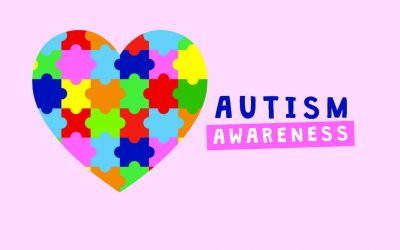Researchers at Rutgers Hope To Solve Autism Puzzle
By Kate Brex for the New Jersey Herald
With autism legislation pending at the state level and grant money awarded
to Rutgers for indexing images of the brain, scientists may crack the
riddle of autism yet.
Research mapping brain patterns in patients with disorders such as
autism is being implemented at Rutgers, The State University of New
Jersey, to develop a new approach to indexing and comparing images of the brain.
A $2 million grant from the National Science Foundation will allow
Rutgers’ researchers to compile living images of brain scans that
physicians worldwide could access for diagnosis and treatment.
The state Department of Education explains autism as a complex
developmental disability that typically appears during the first three
months of life. It is caused by a neurological disorder that affects the
functioning of the brain in the areas of social interaction and
communications skills.
Incidents of autism have dramatically risen during the past decade.
The rate of children diagnosed with autism in New Jersey increased 559
percent from 446 cases in 1992-1993 to 2,925 cases in 2000-2001. It is a
pressing health problem with no apparent cause, according to researchers.
And according to the Center for Disease Control Web site, 53 infants
are born daily in the United States who will be diagnosed with autism
spectrum disorder this year, or roughly 19,000 infants per year.
Jennifer Desaye, child study county supervisor for the state
Department of Education said the department formed a coalition on autism
to study the increase in the incidence of the disorder and effect a curriculum
for students.
“Both Vernon and Sparta school districts have recently implemented
autistic programs within their special education program,” Desaye said.
Judy Geddis, child study supervisor for the Sparta school district
said an explosion of students diagnosed with autistic spectrum disorder
reached the district in 1999. A nationwide increase of 544 percent has
spurred educators to identify autistic children and execute a core
curriculum, she said.
“It really doesn’t matter what the cause of the disorder is,” said
Geddis. “We must educate them.”
Geddis said the district became aware of the glut of autistic
children in 1999 and made plans to see what could be done to educate the increasing
number of autistic students.
“They learn very differently,” she said. “They don’t learn by
imitating behavior, like you or I. You have to teach them each step in a
process, whether it’s brushing teeth or reading.”
According to recent statistics from the CDC, one in 150 children
suffer from autism spectrum disorder, which includes Aspergers Syndrome, a
milder form of autism.
A 2001 CDC press release cited numerous law firms that are actively
prosecuting cases alleging that a mercury preservative in children’s
vaccines causes neurological damage to infants who are ultimately
diagnosed with autism or autism spectrum disorder.
Ten law firms across as many states claim to have unreleased
confidential CDC reports stating that mercury in children’s vaccines is a
potential source of the neurological damage found in autism, it said.
Children are required by law to be inoculated by age five when they
enter the school system. When asked if she thought mercury in children’s
vaccines was a potential cause of the disorder, Geddis said, “I am not
going there. All I know, at this point, is we have to teach these children.”
A combination of factors may cause autism, according to the Autism
Society of America Web site: Viral infections during pregnancy and birth,
environmental factors, allergies, yeast and children’s vaccines.
State Assemblywoman Loretta Weinberg (D-Bergen) and fellow
Assemblyman Matt Ahearn (D-Bergen) sponsored a bill that would add $1 surcharge to all highway litter violations for autism research.
The collected surcharges would be placed into an account labeled the
“Autism Medical Research and Treatment Fund” for use by Gov. James E.
McGreevey’s Council for Medical Research and Treatment of Infantile
Autism.
“Autism is a perplexing disease that warrants much more in-depth and
technologically advanced research,” said Weinberg. “The surcharge will
generate funds to benefit autistic children while supplementing the
appropriation of the governor’s council in the current budget.”
Rutgers plans to index brain images using a functional magnetic
resonance imaging (MRI) that would aid doctors in diagnosing and planning
a course of treatment for patients with similar brain scans, says Paul
Kantor, professor of library and information studies science at Rutgers’ School of
Communication, Information and Library Studies in New Brunswick.
Millions of bytes of data from the brain would be transformed into
moving images, allowing doctors to see how brain signals move across the
brain.
“Scientists would greatly benefit from accessing these images, to
look for patterns that might provide clues about the differences between a
diseased brain and a normal brain,” said Kantor.
According to Kantor, the new research tools being developed are
based on the brain’s activity. When a thought, emotion or sensation occurs in
the brain, signals create a pathway through the brain’s neurons that are pictured by brain imaging techniques such as MRIs.
The complex chemistry of the brain camouflages the existing
pathways, much as a vine is hidden by its leaves, said Kantor. The Rutgers research
team aims to find the vine through the leaves filtering away the secondary
signals and noise finding the original pathway.
A second component would match pathways similar to one another, he
said, aiding doctors with diagnosis.


